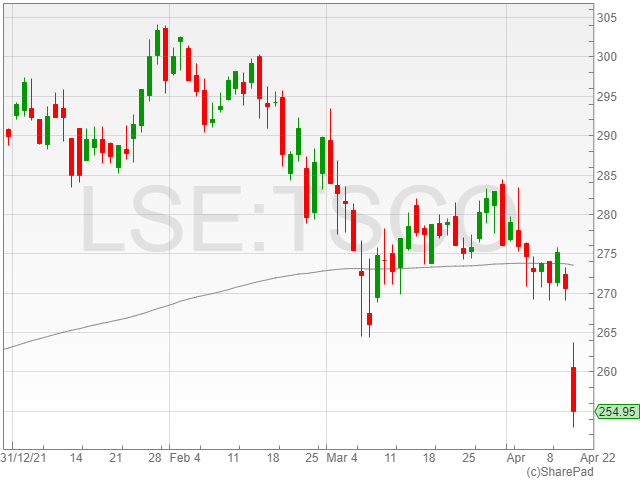Tesco shares were down 5% to 256.8p in early morning trading on Wednesday, after the Big 4 grocer cautioned investors of potential market disruption and a widened profit guidance over 2022 in its preliminary results for the past year.
The supermarket reported a 2.5% rise in Group sales to £54.7 billion compared to £53.4 billion in its last annual report.
Tesco also announced a 2.5% increase in Group sales to £54.7 billion compared to £53.4 billion for 2020 to 2021, alongside an adjusted operating profit surge of 58% to £2.8 billion against 1.7 billion the previous year.
The Group highlighted a 2.2% rise in like-for-like sales across its UK and Republic of Ireland customer base, which the supermarket attributed to strong sales, reduced Covid-19 costs and a return to profitability in Tesco Bank.
Tesco Bank swung back to a profit of £176 million compared to a loss of £175 million, and a revenue of £922 million against £735 million last year.

The company also reported an adjusted diluted earnings-per-share rise of 88% to 21.8p compared to 11.5p.
However, the supermarket caveated its optimistic results with a warning to investors that its profit guidance for the next year would be widened to an adjusted operating profit between £2.4 to £2.6 billion.
Tesco said that it currently anticipates a wide selection of disrupting factors, including post-lockdown customer activity, cost inflation and significant investment to retain market price position.
The grocer announced a 19% dividend increase to 10.9p per share compared to 9.1p the previous year.
Tesco further announced the rollout of £750 million in share buybacks by April 2023, following its earlier £300 million buyback scheme.
“Over the last year, we delivered a strong performance across the Group, growing share in every part of our business,” said Tesco CEO Ken Murphy.
“We did this by staying focused on our customers and doing the right thing for our colleagues, our supplier partners and the communities we serve.”
“I want to thank all of our colleagues who did a brilliant job navigating the ongoing pandemic, dealing with the supply chain challenges in the industry and tackling the onset of increasing inflation.”
